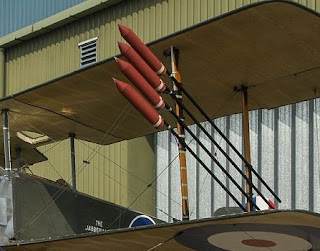Gray (pronounced grey)
(1) Of a spread of colors between white and black; having
a neutral hue; any achromatic color; any color with zero chroma, intermediate
between white and black.
(2) Something in or of this color, applied particularly
to horses (and sometimes of a horse that appears white but is not an albino).
(3) Conveying a sense of the dark, dismal, or gloomy.
(4) Conveying a sense of the dull, dreary, or monotonous.
(5) In informal use, of older people; pertaining to old
age (related to having gray hair; being gray-headed), sometimes expressed as
graybeard.
(6) In demography (originally slang but now often used
formally), of the aging of a whole population or those in a certain sector or geographic
region (such as “the graying of the Freemasons”).
(7) In economics, as “gray dollar” (the purchasing power
of older consumers), “gray collar” (the workforce participation of older
workers) & “gray market” (a (usually) lawful but unofficial state where
goods are produced or imported outside of the usual channels (ie between the (white)
market and the “black market”).
(8) As “gray matter” an informal reference to (1) the
physical brain, (2) levels of intelligence or (3) thought processes.
(9) Something indeterminate and intermediate in character,
often as “gray area” (ie neither black or white; neither one thing or another;
a state of uncertainty).
(10) In certain industrial production, an unbleached and
un-dyed condition.
(11) In metallurgy and industrial production, the color
of freshly broken cast iron.
(12) Documented since 1863 (the oral use presumably
earlier), a member of the Confederate (southern) army in the American Civil War
or the army itself (based on the standard uniform color, compared with the
Union (northern) forces which wore blue, the idea used also in the description
of the World War II (1939-1945) German army (Heer) as the Feldgrau (field gray),
a later variation in the GDR (the German Democratic Republic, the Old East
Germany) being Steingrau (stone-grey) for the National People's Army,
(13) In physics, the standard unit of absorbed dose of
radiation (such as x-rays) in the International System of Units (SI), equal to
the amount of ionizing radiation absorbed when the energy imparted to matter is
1 J/kg (one joule per kilogram) and a gray is equivalent to 100 rads. The unit was first used in 1975 and was created
in honor of English radiobiologist Louis Harold Gray (1905–1965). The standard abbreviation is Gy.
(14) In film-stock photography, to give a soft effect to
(a photograph) by covering the negative while printing with a ground-glass
plate (now emulated in software in digital photography).
(15) In the (mostly US) discipline of ufology (an umbrella
term which encompasses all which evolved from the flying saucer sightings of
the 1950s), an extraterrestrial humanoid with grayish skin, bulbous black eyes and an enlarged head with an unchanging, serious expression (who sometimes carries an anal probe).
(16) In gambling, a penny with a tail on both sides, used
for cheating in the game of two-up (US).
(17) In wastewater management, as “gray water”, household
waste water not suitable for human consumption but able to be re-used for some
purposes without purification (such as garden irrigation), and thus contrasted
with black water (wastewater from toilets, garbage disposal, and industrial
processes which demands treatment prior to reintroduction to the environment).
(18) In computing, as "grayed-out", the practice in graphical user interfaces (GUI) to display a non-available menu option in a shade of gray, the choice reverting to a different color when available for selection.
(19) To make or become gray.
Pre 900: From the Middle English gray, grei & grai (of a color between white and black; having little or no color
or luminosity), from the Old English grǣg & grēg, and the Mercian grei,
from the Proto-West Germanic grāu, from the Proto-Germanic grewa & grēwaz, from the primitive Indo-European ǵreh- (to green, to grow) and cognate with the German grau, the Old Norse grār &
grár, the Dutch grauw, the Latin rāvus (grey),
the Old Church Slavonic зьрѭ (zĭrjǫ) (to see, to glance), the (archaic) Russian зреть (zret) (to watch, to look at) and the Lithuanian
žeriù (to shine). There appear to be no certain connections outside Germanic and the French gris, the Spanish gris, the Italian grigio and
the Medieval Latin griseus are all
loan-words from Germanic. The adjective form was the first, the noun emerging
as a derivative circa 1200 while the verb with the sense of “become gray,
wither away” came into use in the 1610s although etymologists note there is a
single instance of gray as a verb in a late fourteenth century text, an example
of the way in which innovations in English don’t always immediately flourish. As a color, there’s no direct synonym (although
silvery, silver & ash inhabit a kind of gray area) but related words in the
figurative sense include drab, dusty, clouded, dappled, heather, iron, lead,
neutral, oyster, pearly, powder, shaded, silvered, slate, stone, ashen & dingy. Gray is a noun, verb & adjective, greyness
is a noun, greyed is a verb, grayer, grayish & grayest are adjectives,
grayly is an adverb; the noun plural is grays.
Lindsey Lohan in Lavish Alice gray suit.
Gray and grey are different spellings of the same word
and the meanings are the same for both (except where based on a proper noun
such as a surname so a product like Earl Grey Tea is always spelled thus)
although there are conventions of use and historic practices should usually be
followed. Except with brand-names or in
the SI unit measuring radiation, the spellings can interchangeably be used
without causing confusion although use should always be consistent. In commercial use, there was in the early twentieth
century an attempt to create a functional distinction between gray and grey, the
former a mixture of “blue & white”, the latter of “black & white” and
there are manufacturers who still use the convention but it hasn’t been widely
adopted. The spelling gray is more
common in American English, while grey is sometimes preferred in British
English despite Samuel Johnson (1709-1784) and just about every English lexicographer
since insisting it should for all purposes be gray.
Gray (and grey for those who prefer the spelling) is
often used figuratively, either as an allusion to the color or to illustrate
some degree of uncertainty (ie that zone between the absolutes of black &
white). In economics, the “gray dollar” expresses
the purchasing power of older consumers, the “gray collar” the workforce
participation of older workers & “gray market” the (usually) lawful but
unofficial state where goods are produced or imported outside of the usual
channels (ie between the (white) market and the “black market”). Then classic gray market is that for cars not
officially available in a certain market but imported by third-parties
(sometimes with the need to modify them to meet local regulations) and
re-sold. The practice was especially
prevalent in the US during its more restrictive times in the 1980s and the gray
market for desirable (ie usually more powerful) models from Ferrari, Mercedes-Benz
and others sold elsewhere in the world saw an industry emerge to meet the need,
the processes involved in making gray market vehicles compliant with US
regulation known as “federalization”.
As an adjective it’s widely used. In wastewater management, “gray water” is household
waste water not suitable for human consumption but able to be re-used for some
purposes without purification (such as garden irrigation), and thus contrasted
with black water (wastewater from toilets, garbage disposal, and industrial
processes which demands treatment prior to reintroduction to the environment). “White water” is not used in this context
because of specific meanings elsewhere, either as “frothy water as in river
rapids” or “white water” (and “whitewater”) navy, part of an admiralty hierarchy
describing the capabilities of naval forces: (1) a brown water force restricted
to rivers and estuaries, (2) a white water force able to operate close to
coastlines and (2) a blue water force which can ply the open seas. In wastewater management, instead of white
water, the preferred term is “potable”.
The use with animals is usually literal (gray fox, gray
elephant, gray squirrel, gray hare, gray wolf, gray whale etc) but a special
use derived from zoology is the “gray mare”, an expression adapted in the 1540s
(from “the gray mare is the better horse”) to refer to households in which the
husband was dominated by the wife. The
use in this context has long been extinct and was unrelated to the nineteenth
century US folk song “The Old Gray Mare”. In equine classification, a gray horse is a
horse with a coat color which appears gray, but is actually a combination of
white hairs mixed with hairs of other colors. Gray horses can be born with a dark coat color
that gradually lightens as they age or they can be born with a light-colored
coat that darkens over time. The range
of “gray” colorations is not uncommon in horses and such is the variations some
are sometimes described as “blue”.
In demography, the use of “gray” as an synecdoche of “aging”
(an allusion to gray hair) began as slang but has become so accepted by
economists and others it probably should now be thought formal. It can be used to describe aging of a whole population
(the “graying of China”) or those in a certain sector or geographic region (“the
graying of the priesthood”). Still a
slang form is “graybeard”, a reference to an older man, one who presumably needs to be bearded if an individual but when applied collectively (“the graybeards”)
it’s based on the age of the group rather than any particular hirsuteness. The phrase “giving me gray hair” is used as a
complaint that someone is so troublesome the stress they induce is causing one
prematurely to age. In some cases, stress
can literally cause premature aging. Battleship
gray is a (narrow) range of dull, matt shades of gray often used for warships,
it being the compromise which worked best as a form of camouflage against the
variations in sea color. Modern paints
used of warships still use battleship gray but with special (stealth)
treatments to reduce susceptibility to detection by radar or other electronic
systems.
In politics an éminence grise (gray eminence) is an influential “backroom operator” who functions as a “power behind the throne”. The classic éminence grise is someone known to few who influences (in some cases rumored to dictate) the decisions made by someone in a powerful position. An éminence grise differs from a “king maker” in that the latter is usually much better known and tends to ensure who is appointed to positions of authority rather than being involved in the discharge of their duties. The first so described as an eminence grise was François Leclerc du Tremblay (1577–1638), an aide to Cardinal Richelieu (1585-1642; chief minister (chancellor or prime-minister) to the King of France 1624-1642). The cardinal wore the customary and conspicuous scarlet while the monk Leclerc was attired in a habit described at the time as gray although evidence suggests it would now be thought beige. His influence on matters of church & state was understood to be great though he was hardly ever seen. In Nazi Germany, the idea of the eminence grise was picked up in the 1940s by party members who resentfully noted the undue influence of Martin Bormann (1900–1945) on Adolf Hitler (1889-1945; German head of government 1933-1945 & head of state 1934-1945), despite him being nominally only the Führer’s secretary. He was known as the der braune Schatten (literally “the brown Shadow” but translated in English as “brown eminence”), an allusion to the golden-brown party uniform habitually he wore. The party uniform also provided cynical citizens with the basis of their description of high-ranking party functionaries as Goldfasan (golden pheasants), a sly reference to them always looking well-fed, regardless of the state of rationing imposed during times of food shortages.


















